Ficus is an exotic houseplant whose decorative value lies in interesting leaves and large size. In Soviet times, having rubber ficus at home was considered prestigious. Today, this plant is no less popular.
Content
Grade characteristics
The genus Ficus belongs to the Mulberry family. It has more than 800 species of plants. Most of them are evergreen, but deciduous species are also found. Indoor grow only a few species of ficus. All of them are evergreen perennials.
The homeland of the plant are the tropics of Malaysia and the Philippines. In nature, it can also be found on the shores of the Pacific and Indian oceans. Many ficus plants grow in the forests of the Mediterranean and South Africa. Some types of plants grow in the Crimea, the Caucasus, in the countries of Central Asia, China, and India.
There are trees, shrubs and ficus lianas. All of them are characterized by a highly developed root system. The stems are strong, resilient. In some species, they are lignified.
Leaves, as a rule, grow alternately. Less common are species with opposite leaves. The plates are solid, represented in various forms. They are attached to the trunk with pronounced petioles. The plant is distinguished by rather large stipules. In some species, they fall off after leaf dissolution; in some, they remain on the petiole of the plate.
The color of the leaves is represented by shades of green. Some ficuses have two-tone or two-color sheet plates with white stains, stripes.
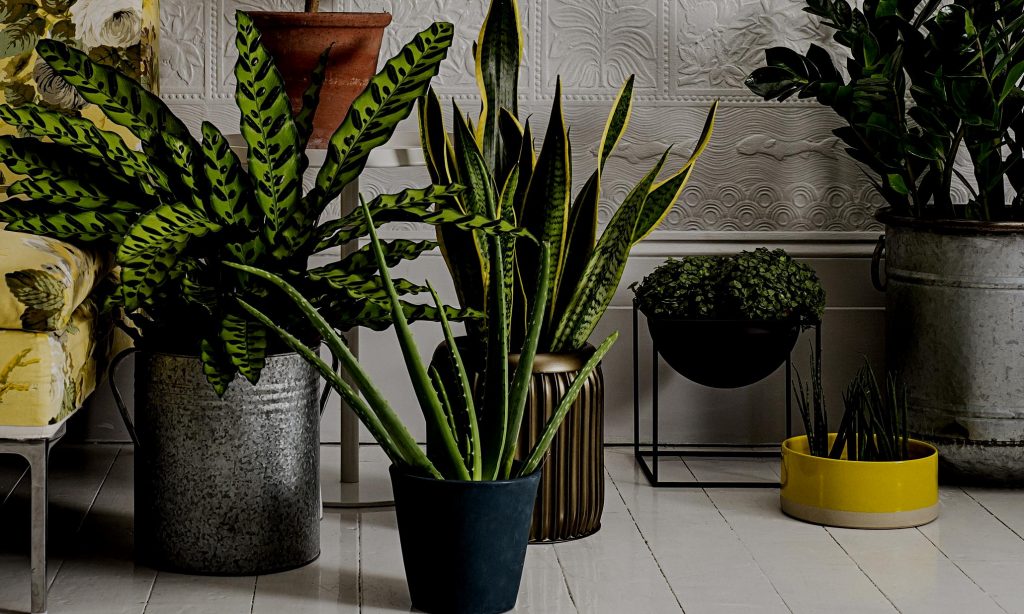 You may be interested in:
You may be interested in:Types of ficus with a photo and description
Only 5 types of plants are widely used in indoor floriculture. To choose the one suitable for growing a house, you should study the assortment of varieties of ficus with photos, names, nuances of care and transplantation.
Rubber bearing
Rubber-bearing or Elastic is one of the most common species of this plant. There are such varieties of rubber-bearing ficus:
- Decor. Very large leaf plates with curved tips. The front part of the plates is bright green, the wrong side is light green. Petioles are “painted” in pink.
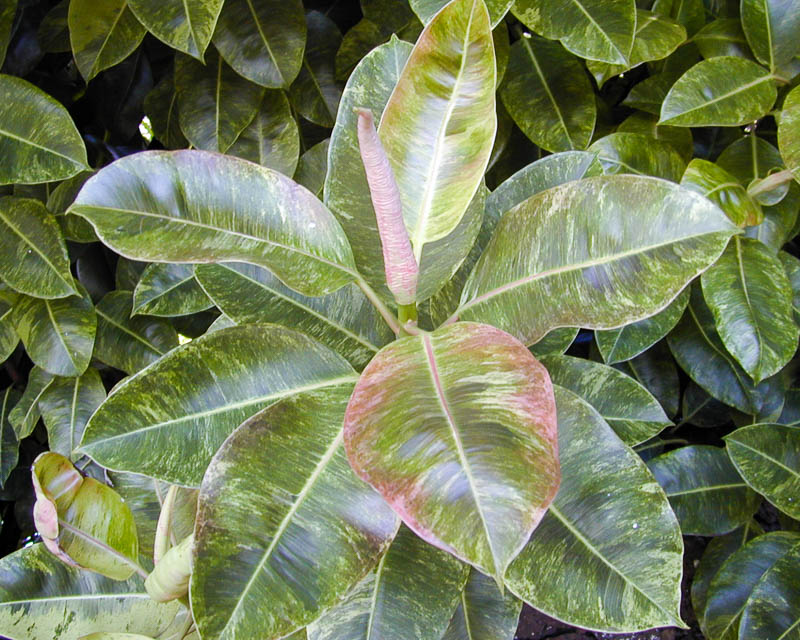
Ficus Rubbery Decor - Black Prince. The variety is distinguished by large leaves of a deep dark green color. The central vein is colored red.
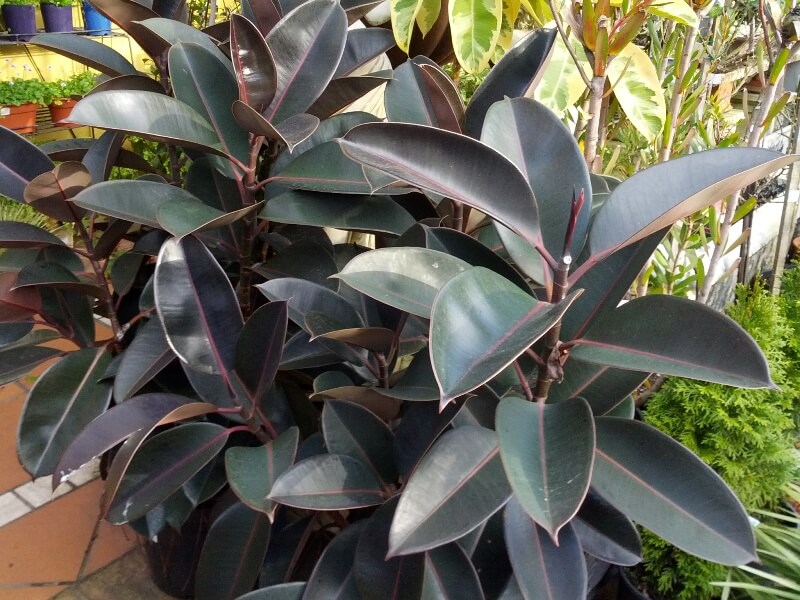
Black Prince - Robusta The variety is very similar to the Decor. The only difference is the blushing vein on the back of the plate.
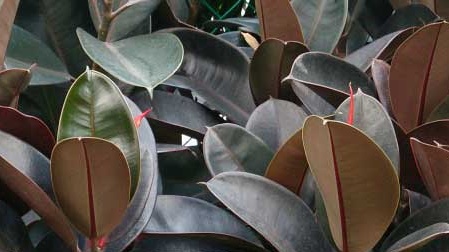
Robusta - Melanie. Externally, the ficus is one in one resembling a Robusta variety. The difference is that Melanie grows in a low bush.
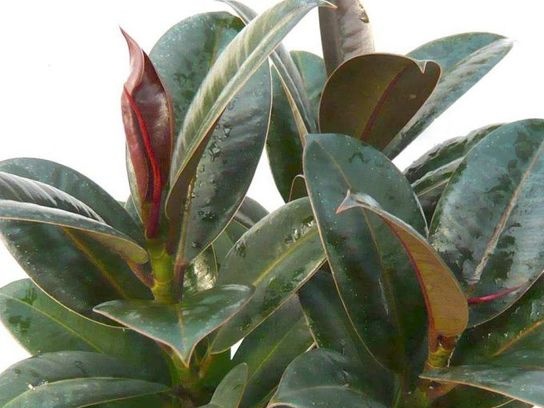
Melanie - Abidjan. Differ in very wide plates of leaves. Young leaves have beetroot color. Over time, it changes to green.
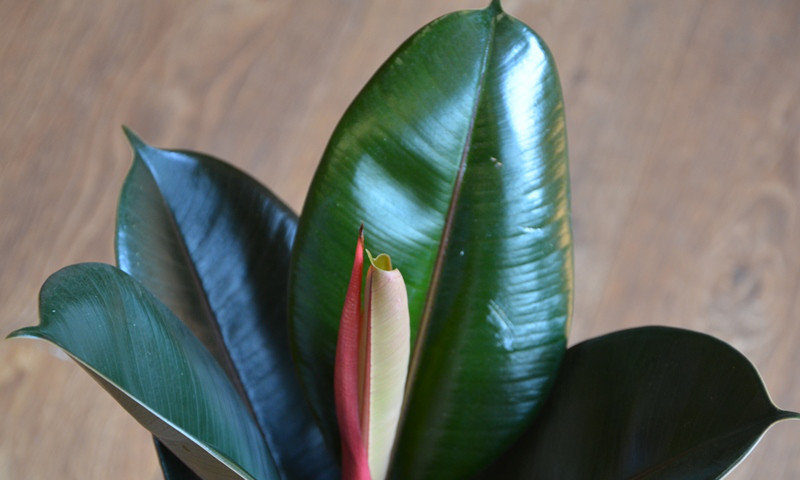
Abidjan - Tineke. It differs in leaves with gray or cream spots on a dark green background.
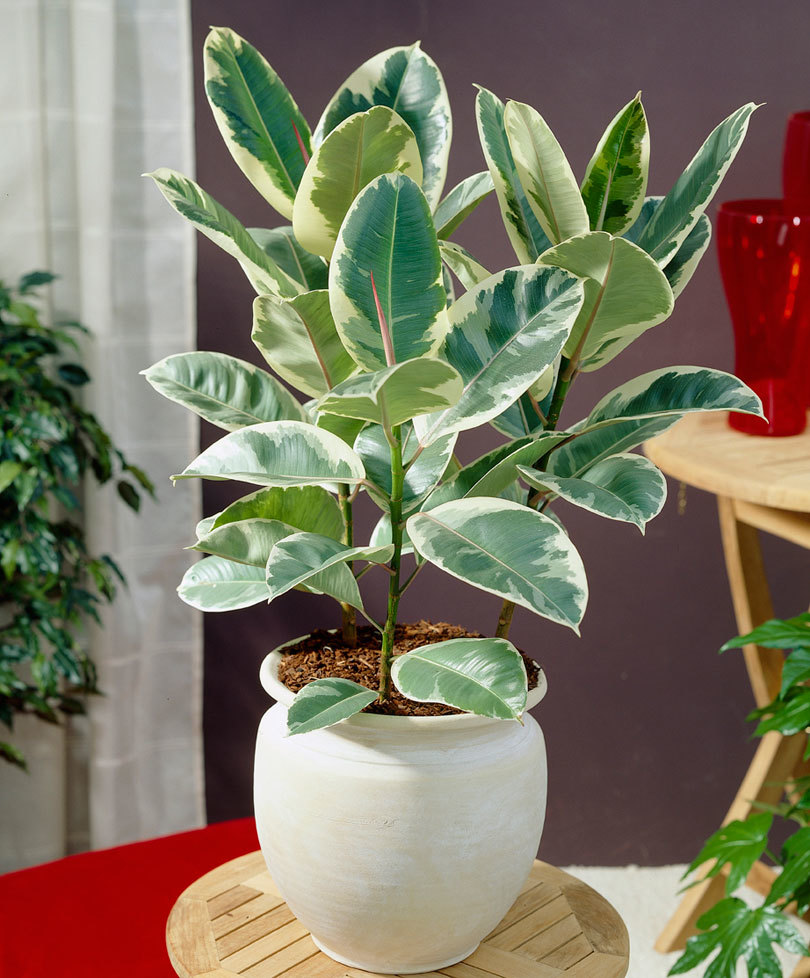
Tineke - Belize Green plates with cream stains. The central vein and the wrong side of the leaf are pink.
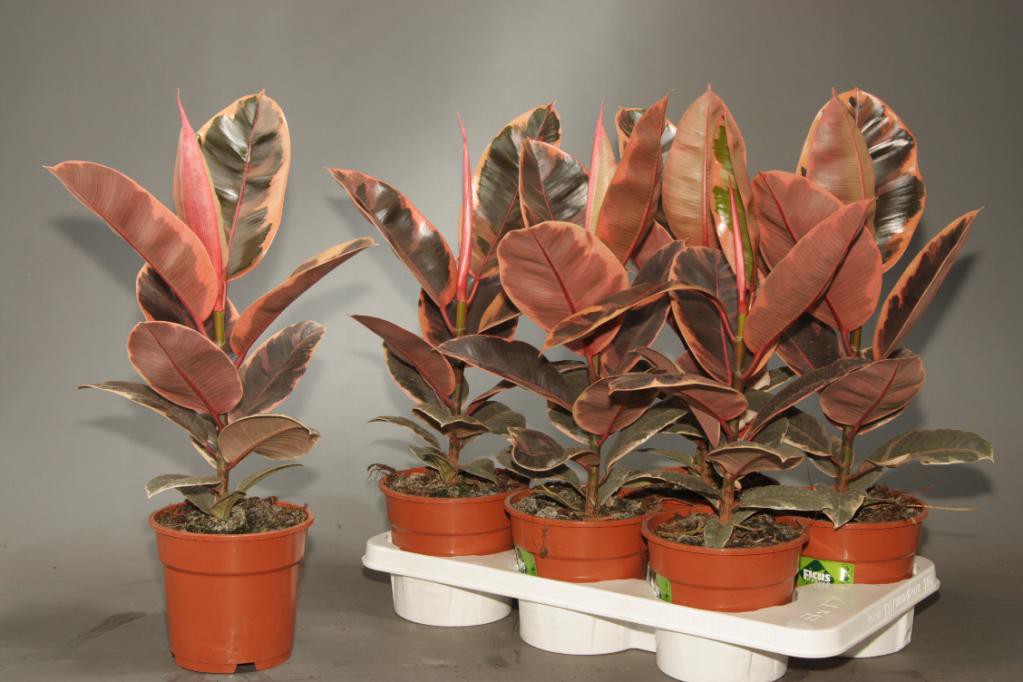
Belize - Brazil This variety is a small copy of Belize.
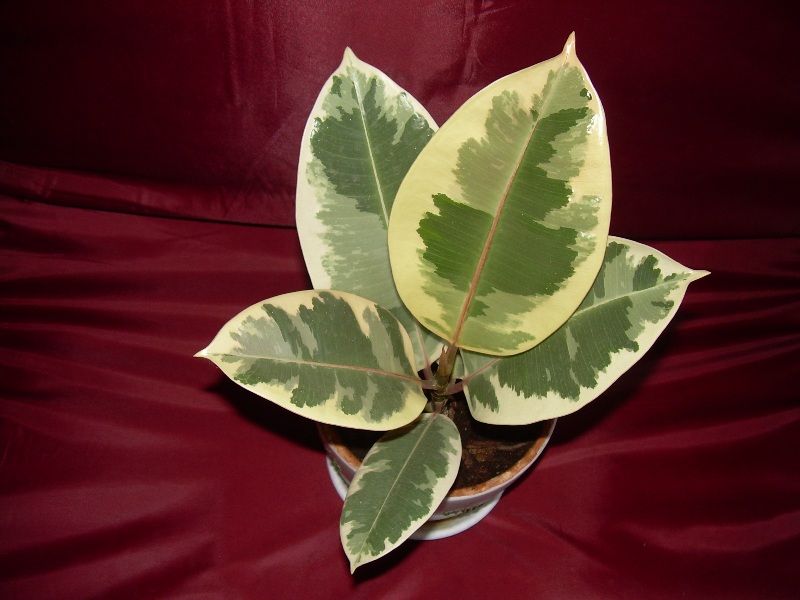
Brazil
Rubber-bearing representatives are the most unpretentious.
Benjamina
The view of Benjamin is no less common. Its representatives grow in the form of a bush or tree. There are many hybrids of this type. The most common are the following varieties:
- Safari. Small-leaved variety with boat-shaped plates. They have a marble color, consisting of a dark green and cream shade.
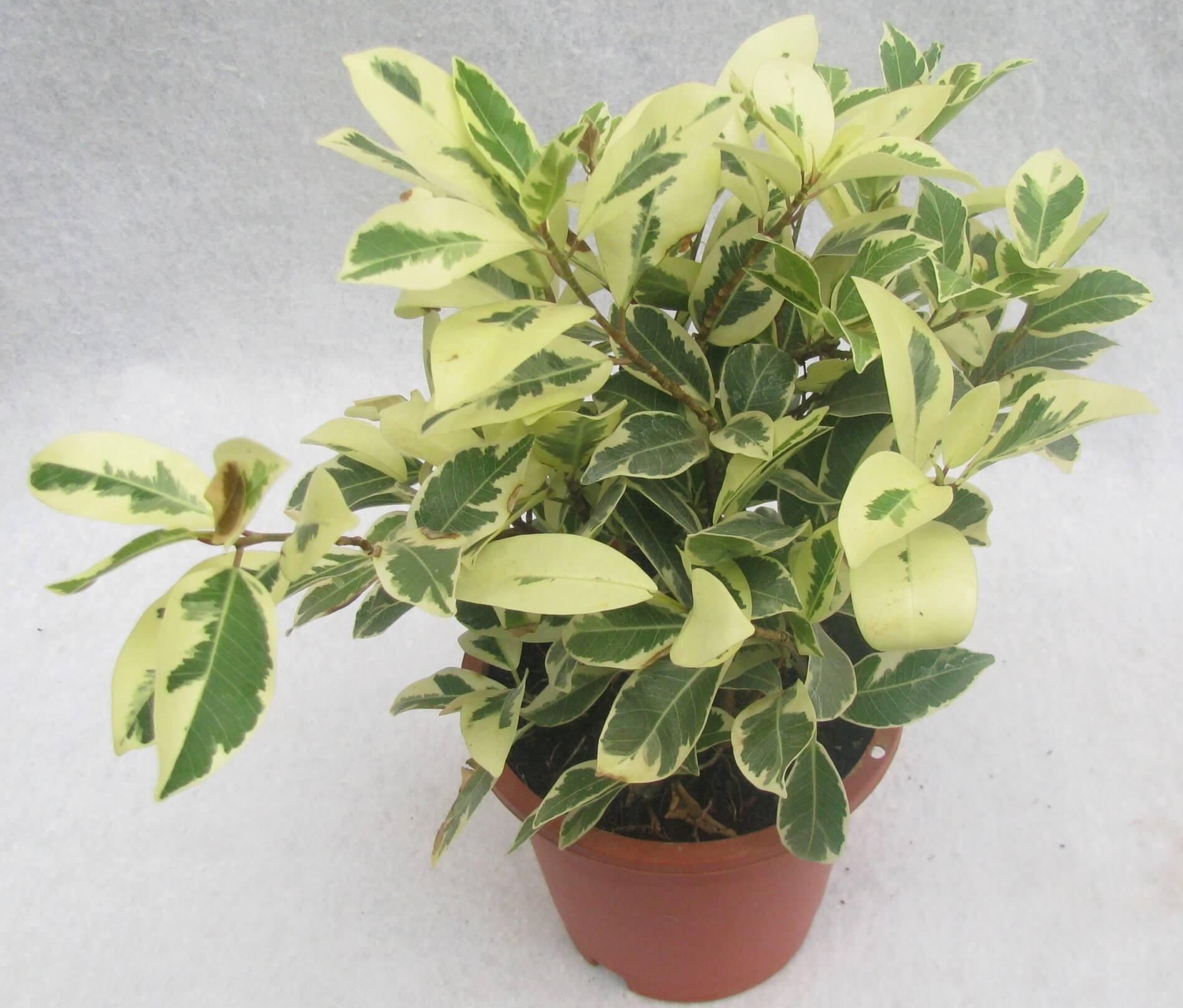
Safari - Baroque. It is distinguished by dark-green leaves wrapped in a ring.
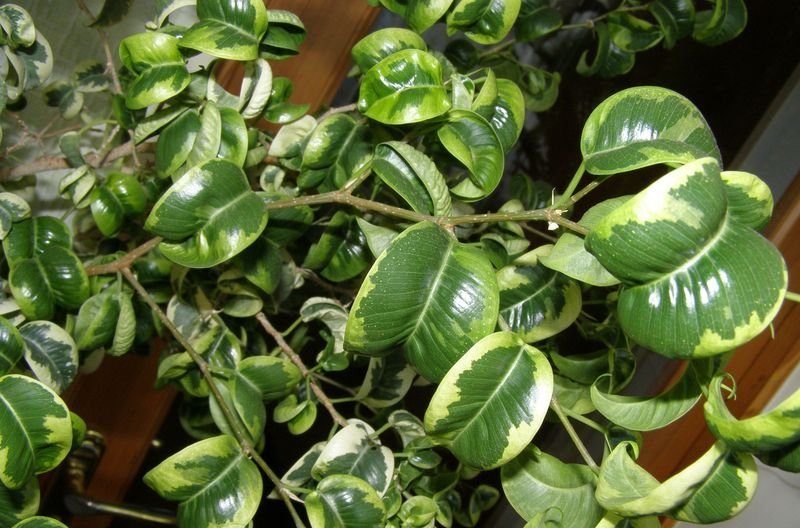
Baroque - Naomi Gold. Large-leaved ficus with thin drooping stems. The plates are painted in light green color.
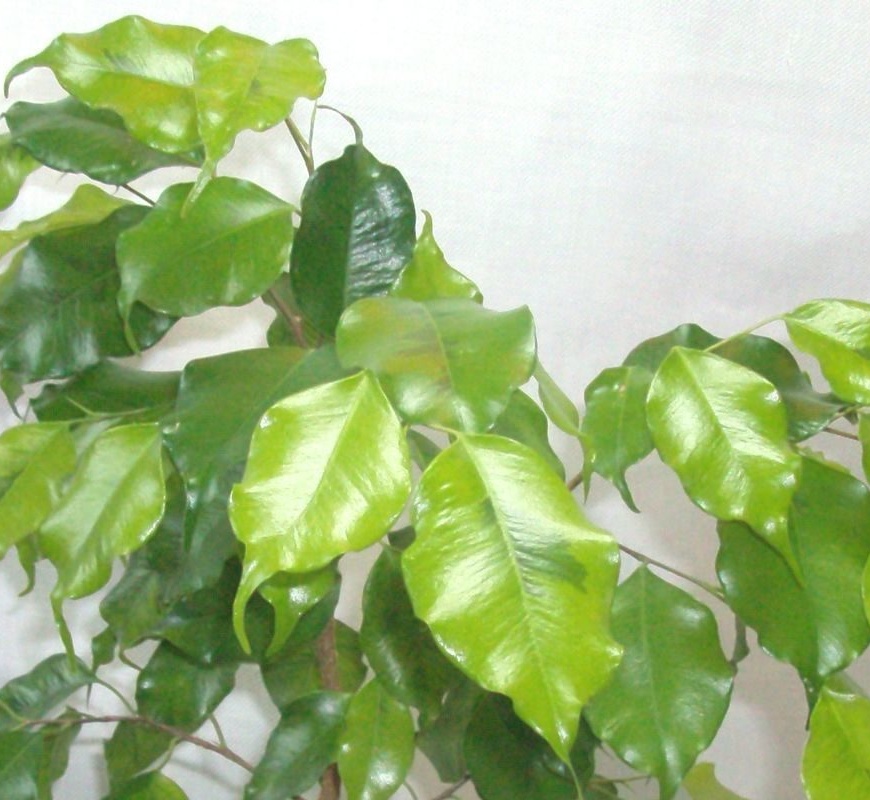
Naomi Gold - Wendy. It features a zigzag stalk, which is constantly changing its direction.
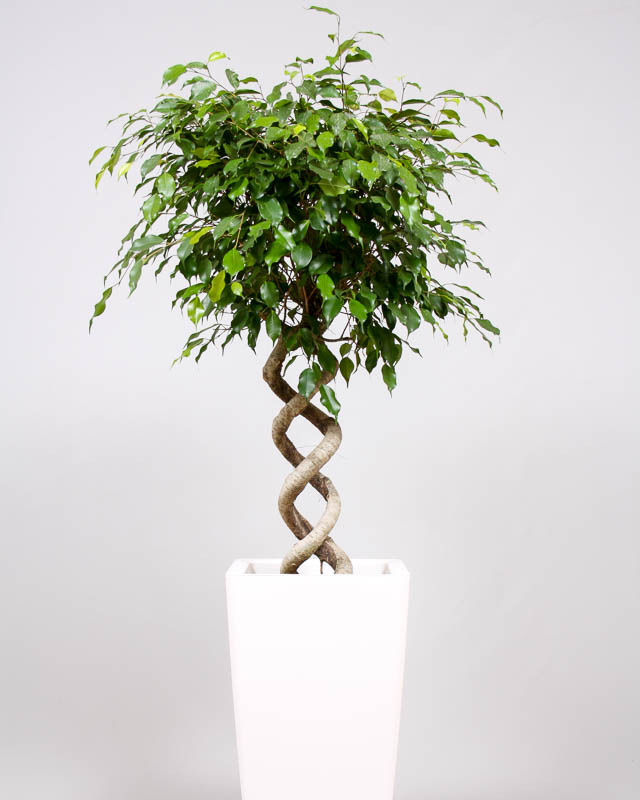
Wendy - El Dorado. Outwardly resembles the Safari variety. The difference is in the larger size of the plates.
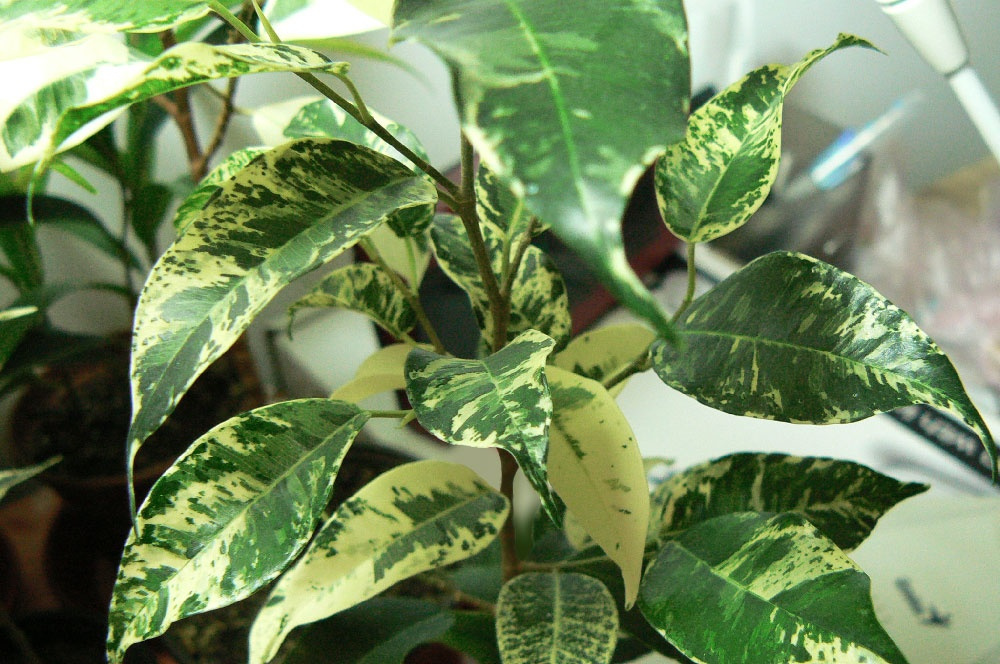
El Dorado
Representatives of the species Benjamin do not tolerate direct sunlight and waterlogging of the soil.
Ali (Binnendika)
Ali is a Binnendik variety. The plant has very long drooping leaves. Glossy plates of saturated green color. This variety is very popular. It is used for landscaping residential premises, offices, large halls.
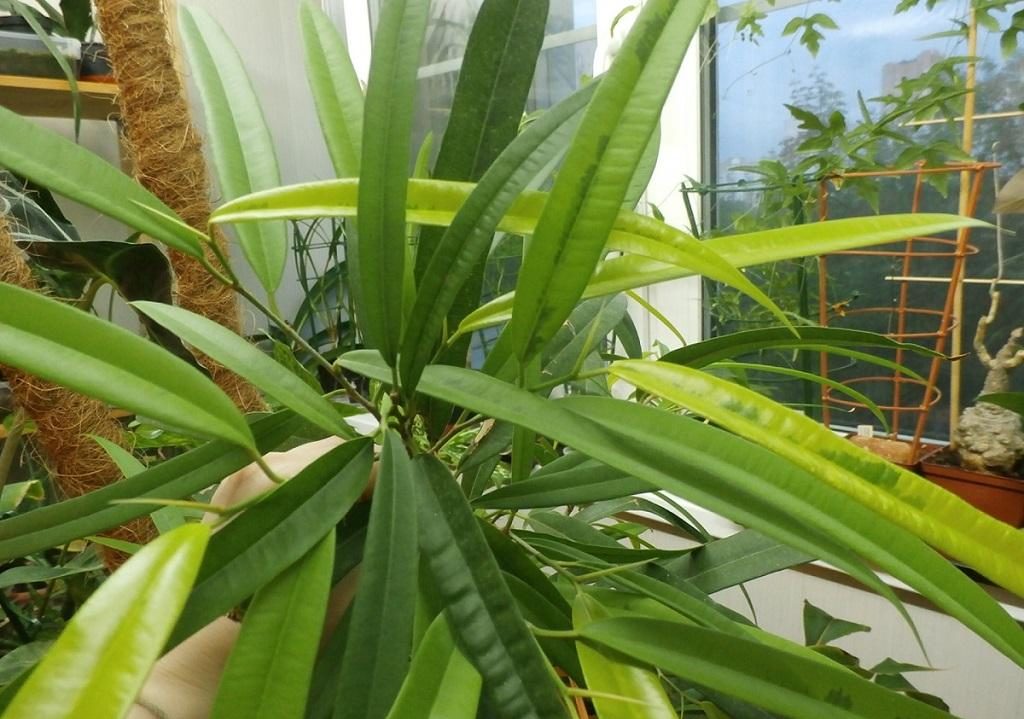
Lyre-shaped
Lyre-shaped species is considered the most spectacular representatives of indoor ficuses. Its size is striking: an adult plant reaches 2.5 m in height; the length of one leaf is 0.5 m, the width is 0.25 m. The trunk is covered with light brown bark. The plates are dark green with light veins.
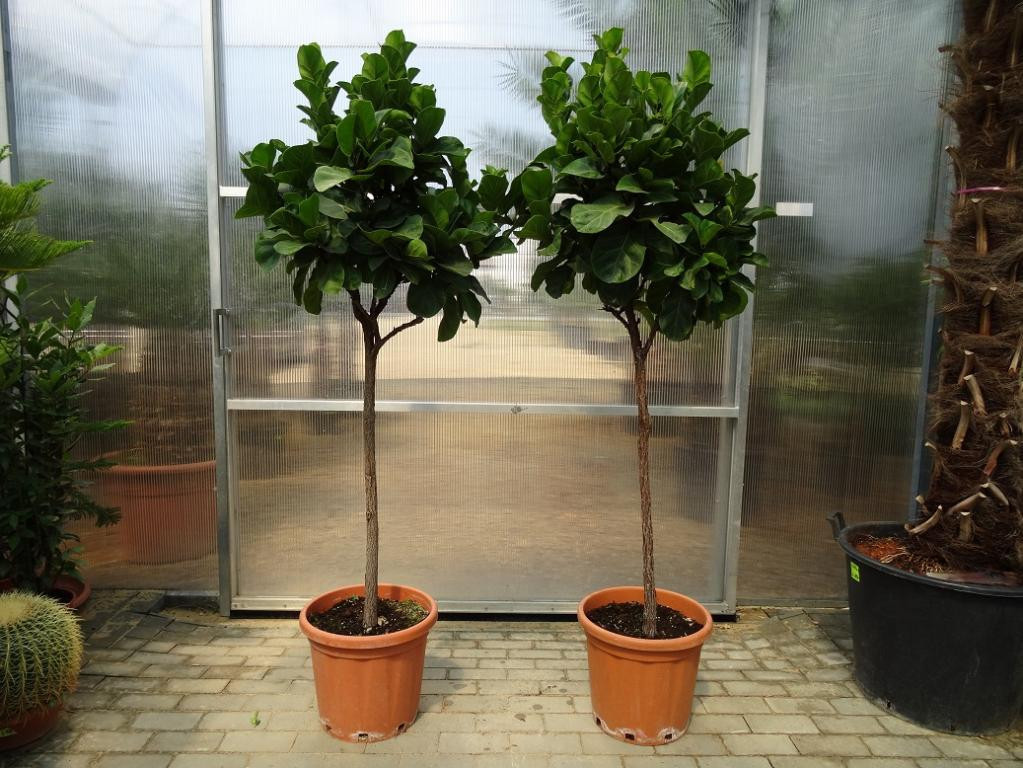
Representatives of the Lyre-shaped species grow only in spacious rooms. A transplant of a young tree is carried out exclusively by transshipment. Adult plants change only the topsoil.
Dwarf
Dwarf ficus is an ampel plant with small round leaves and very branched stems. There are such varieties of the Dwarf species:
- Sunny It features a bright light green color.
- White Sunny. It is characterized by dark green plates with white stains.
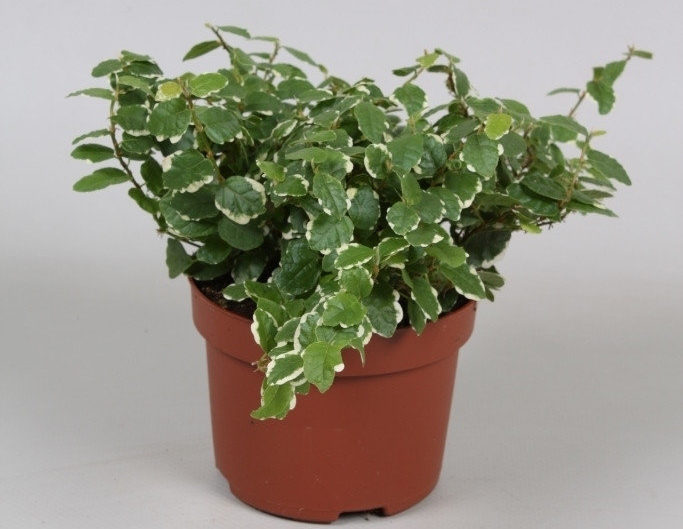
The dwarf species needs a systematic pruning. Otherwise, the plant will look untidy and lose its decorative effect.
How to care for a plant at home
It’s easy to take care of ficuses at home. Subject to the necessary standards of care, the plant grows rapidly and pleases the eye with exotic beauty.
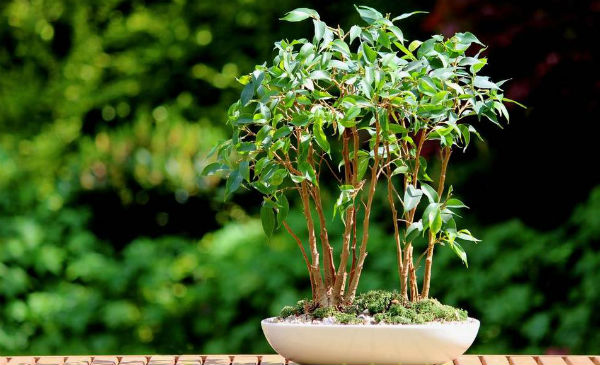 You may be interested in:
You may be interested in:Temperature and humidity
These flowers are very thermophilic. The optimum temperature for their maintenance is considered to be a range from 25 ℃ to 30 ℃ in the warm season and from 16 ℃ to + 20 ℃ during cold weather. The critical minimum is 10 ℃.
For normal life, the ficus needs to create conditions of high humidity. The optimal level of humidity is 70-80%. You can increase air humidity in the following ways:
- Placing a flower in a room with an aquarium or household humidifier.
- Install a flower pot on a tray with wet pebbles.
- Constant spraying of air around the plant.
Leaves should be periodically wiped with wet wipes. In the warm season, it is advisable to periodically put a flower under the shower.
Shine
The plant needs a lot of bright light.Only varieties with dark green leaves are allowed to shade. Variegated hybrids like direct sunlight. Such ficuses are best grown on the windowsills of the east, west and south windows.
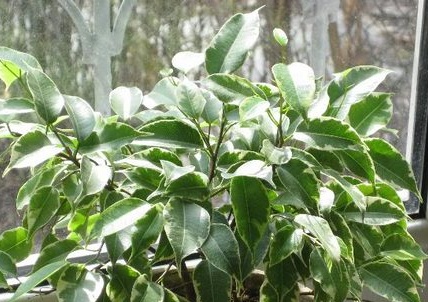
In winter, the plant may need to install additional lighting. To do this, you can purchase special phytolamps or use conventional fluorescent lighting, UV lamps. To prevent curvature of the trunk, the pot is periodically deployed in different directions.
Watering and feeding
Humidification of ficuses occurs by overhead irrigation. During active growth, it is produced on demand: when the soil surface is completely dry. In winter, the flower is moistened no more than once a week. For irrigation use soft defended water.
Plant nutrition is carried out exclusively during the growing season, from April to September. Fertilizer is applied twice a month. For feeding use mineral fertilizers for decorative and deciduous houseplants. The main component of the fertilizer should be nitrogen.
Diseases, Pests and Treatment
Ficus can become a victim of the following diseases and pests:
| Title | Symptoms | Treatment methods | |
|---|---|---|---|
| Disease | Root rot | Leaves turn yellow, then darken and fade | Removing the affected parts of the ficus and treating the plant with a fungicide solution |
| Cercosporosis | The underside of the sheet plates is covered with black dots. Over time, such leaves turn yellow and fall | ||
| Anthracosis | The appearance of dark brown spots on the plates, which eventually turn into ulcers | ||
| Botritis | Gray plaque on all ground organs of the ficus. When shaking, plaque is showered with dust. Over time, the affected organs darken and die. | ||
| Sooty mushroom | Black plaque on the back of the sheet. | Rinse off with a mild soapy solution | |
| Pests | Aphid | Small whitish insects on the wrong side of the plates | With a small number of insects, the plant is treated three times with a concentrated aqueous solution of laundry soap. In case of severe infection, ficus can be treated with insecticides |
| Nematodes | Twisted leaves with rounded worms inside | ||
| Shields | Dark brown growths on the back of the leaf plate | ||
| Thrips | Flattened small insects on the front side of the leaf | ||
| Mealybugs | "Cotton" worms on the ground organs of the plant | ||
| Spider mites | Marble spots and the finest cobweb on the leaves |
It should be noted that these plants are extremely rare. As a rule, diseases are the result of improper care. Florists have a good saying about this: “clean leaves are the key to the health of ficus.”
Propagation and transplantation of a flower at home
A young plant is transplanted annually. Adults are permissible to transplant every 2-3 years. Large flowers growing in tubs are undesirable to touch because of the risk of damage to ground parts. Such flowers just change the soil from above.
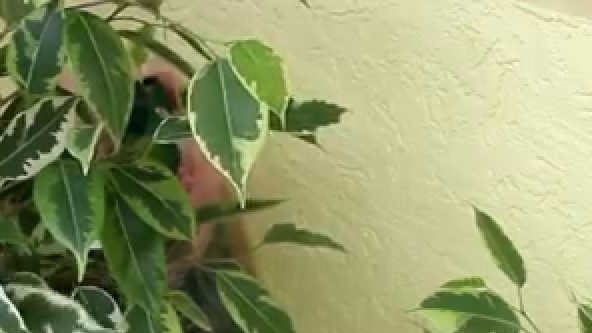
There is a special soil for ficus, although it is worth noting that these plants grow well in universal soil mixtures. You can prepare the soil yourself. To do this, you need the following components:
- river sand - ¼;
- sheet land - ¼;
- peat - ¼;
- turf land - ¼.
The flower is propagated by cuttings, layering and seeds. Further in more detail about each method.
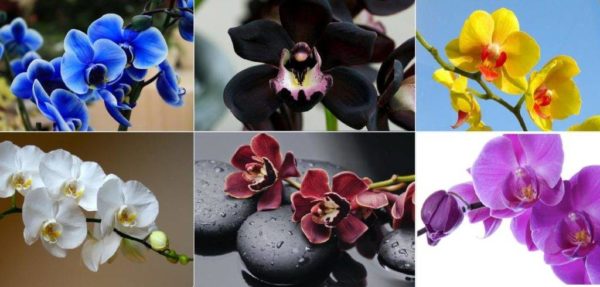 You may be interested in:
You may be interested in:Cuttings
Propagation by cuttings occurs as follows:
- A piece of stem 10-15 cm long is cut obliquely.
- Extra leaves are removed from the handle, leaving only the top pair.
- The cutlery is placed under running water to remove milky juice.
- The cuttings are rooted in the usual soil for ficus. Put on a transparent cap from above.
- The seedling is sprayed and aired daily.
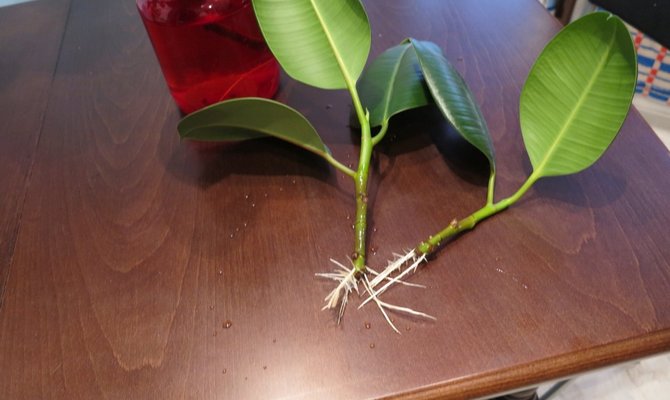
As soon as the stalk takes root and leaves new leaves, it is transplanted as an adult plant.
Layering
To obtain a new flower by layering, you must perform the following actions:
- A small incision is made on the trunk 1/3 of its thickness.
- A match or a toothpick is inserted into the slot so that the edges of the cut do not close.
- The cut part of the trunk is wrapped with wet sphagnum moss and fixed with a film.
When good roots appear at the incision site, a part of the trunk with aerial roots is cut off and rooted in the soil that is usual for ficus.
Seeds
The removal of ficus from seeds occurs in the following way:
- Seeds are sown in a container with moist soil for ficus and lightly pressed.
- The container is covered with polyethylene and placed in a dark place.
- On a daily basis, the inoculum is moistened by spraying and aerated for 30 minutes.
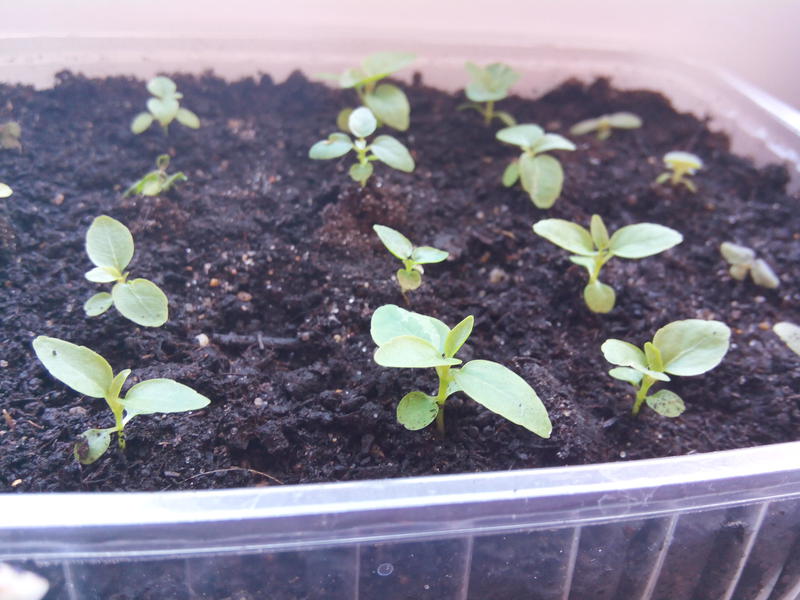
The first shoots will appear 10 days after sowing. In some species, this takes up to 8 weeks. Sprouts with two good leaves dive into separate containers, but continue to be kept under the film. Fortified ficuses are transplanted as adult flowers. A good time for sowing is early spring.
Common Growing Questions
Growing ficus at home is not difficult if you follow certain care recommendations. A wide selection of plant species and varieties will not leave anyone indifferent.

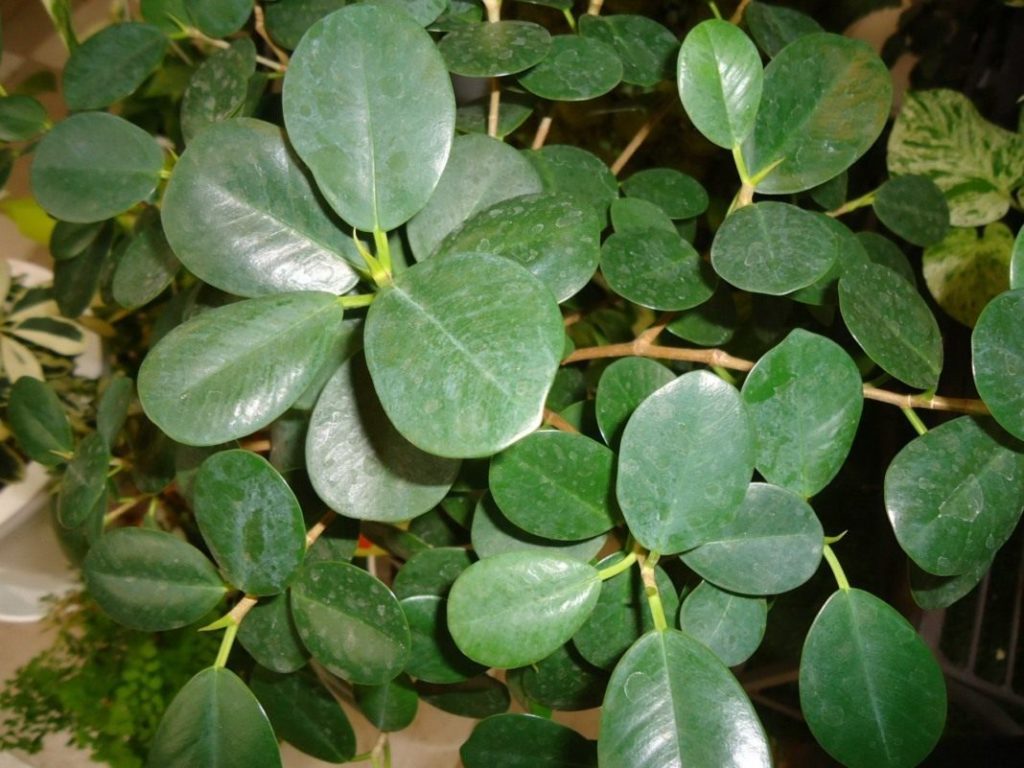
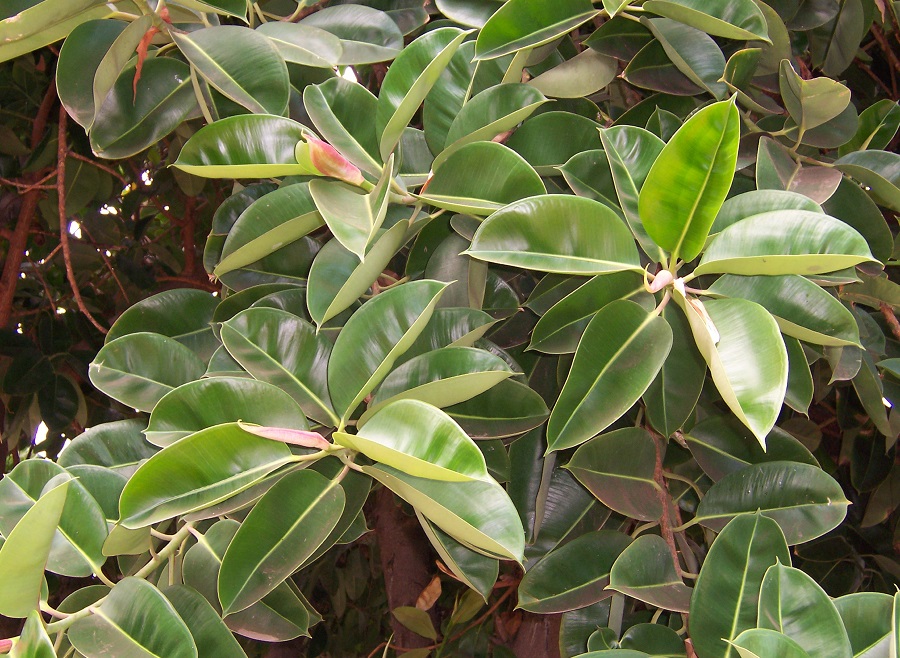
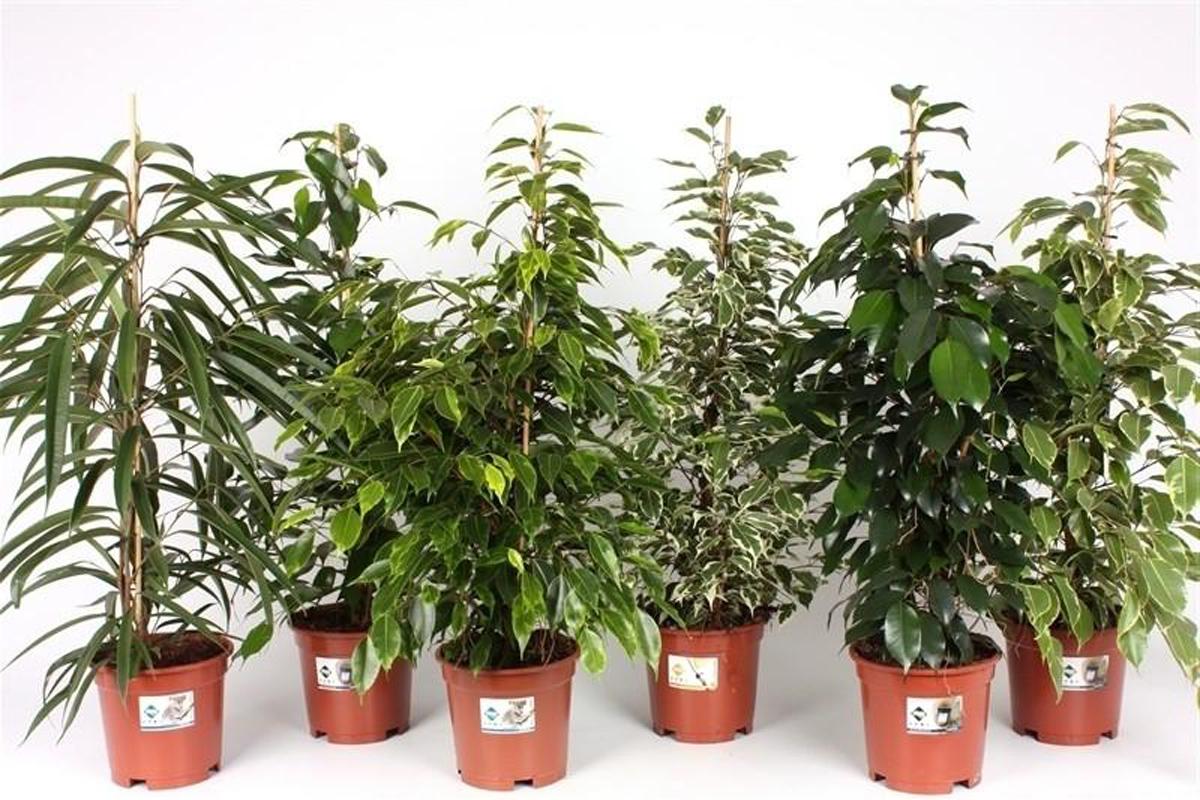
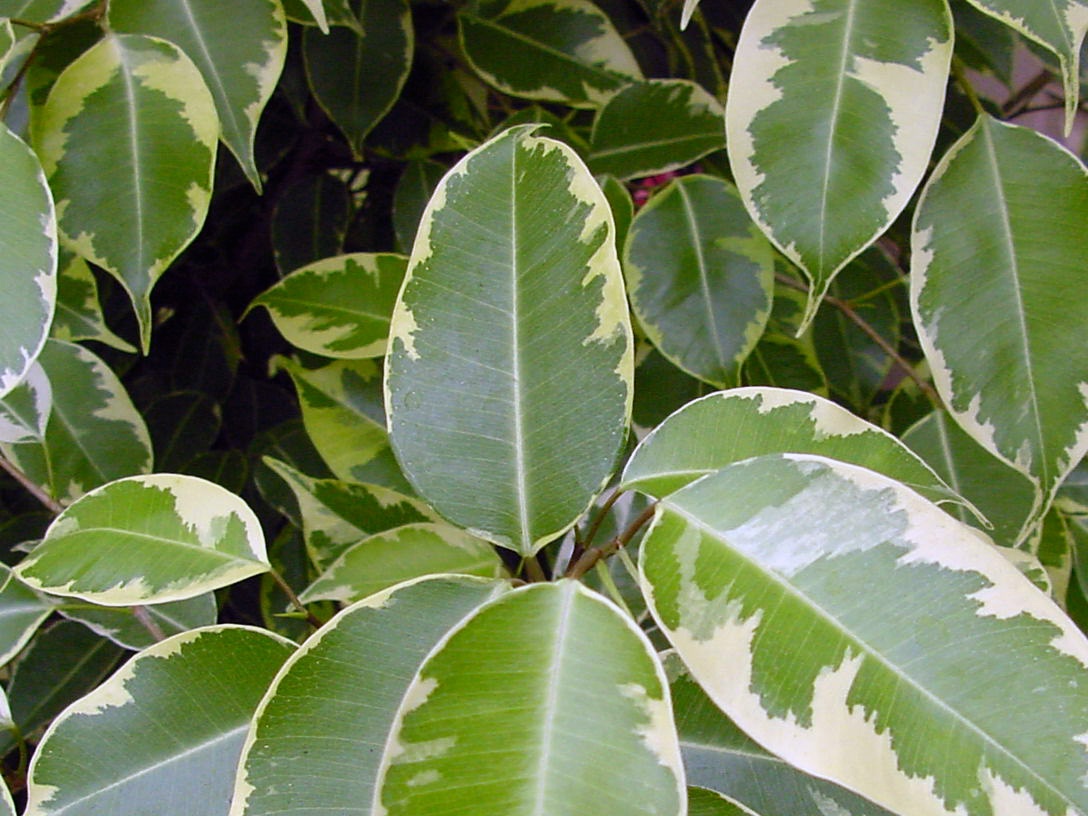
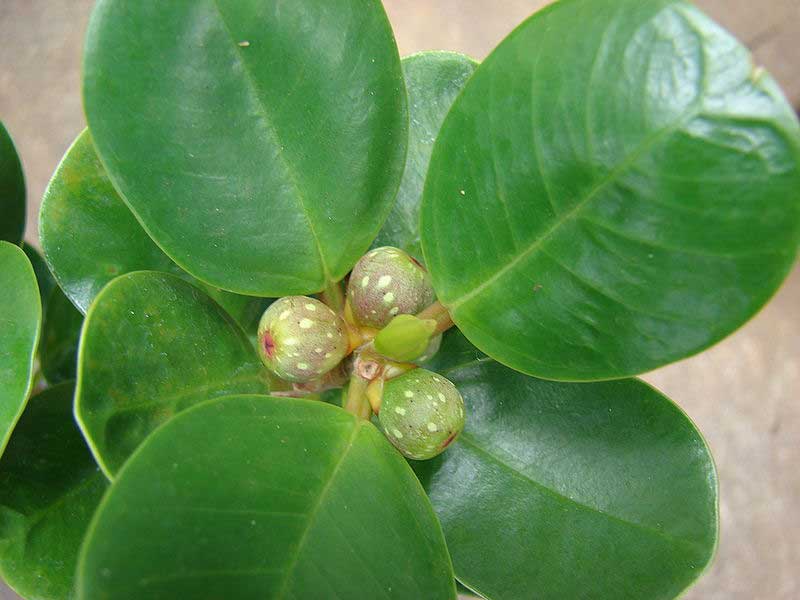



 Sow in the ground, without seedlings: 10 beautiful and unpretentious flowers
Sow in the ground, without seedlings: 10 beautiful and unpretentious flowers Platicodon planting and outdoor care
Platicodon planting and outdoor care Hosta - planting and care in the open ground in the Urals
Hosta - planting and care in the open ground in the Urals Oleander - care and growing at home
Oleander - care and growing at home